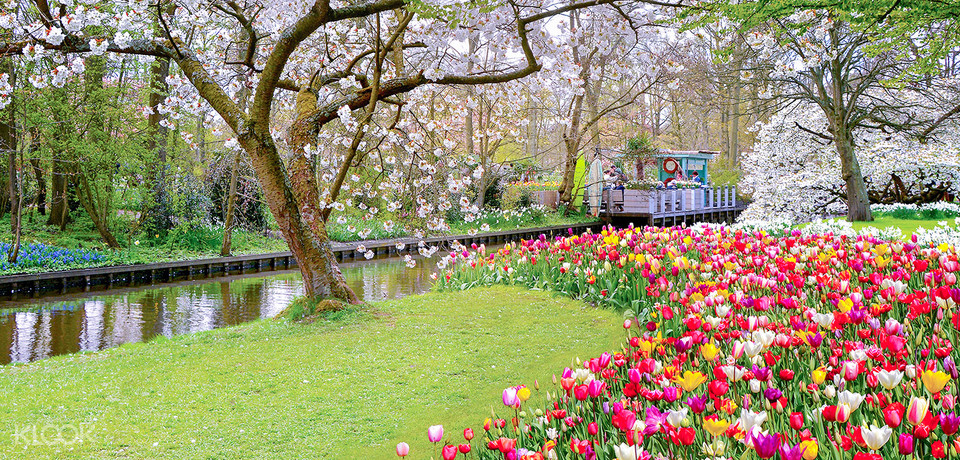by Lianne Krane, for the Puslinch Pioneer

Most of you probably know the world-famous Keukenhof, the most beautiful tulip garden in the world. Every year millions of tourists visits this garden…and it is only open in spring! Every year, a hard-working crew makes sure the garden looks as good as ever, including this year!
This year is ‘special’. Keukenhof is closed, for the first time in 71 years. But that does not mean there are no flowers. On the contrary, the flowers look incredible and get as much attention and care as always. All the passionate gardeners do their work as they are used to. Because even without people, nature and the show of the garden goes on. This is one of the finest examples of naturalizing you will see in the world.
At home, before deciding where to plant bulbs that naturalize, consider where your landscape needs more colour at various times in spring and early summer. By planting a combination of different species and cultivars, you will enjoy a succession of bloom that lasts several months or more. Also consider the garden setting and the effect you would like to achieve.
In a woodland garden, incorporate bold, sweeping drifts of early spring colour. The moist soils and shaded conditions are ideal for naturalizing Snowdrops, Crocus, early Daffodils, Grecian Windflowers, Glory of the Snow and Winter Aconite. These plants colonize vigorously and thrive under deciduous trees.
In lawns and the front of mixed borders, plant Grape Hyacinths, and low-growing Allium. You also can tuck these bulbs into ground cover beds, such as ivy and pachysandra, for colour and contrast.
Daffodils are a good naturalized. However, since the foliage does not mature until the end of June, many gardeners tend to mow off the foliage before its time. Therefore, it is wise to naturalize daffodils in an out of the way location where lack of mowing can be tolerated.
For rock gardens, entryway locations and other areas where close-up detail is desired, choose small Crocuses, Snow Glories, Winter Aconite, Groundcover Tulips, and other bulbs with diminutive blooms. Plant them in small clusters at the corners of beds, in crevices between rocks, or between later blooming garden plants.
Bulbs are easy to please. They are not fussy about soil if it isn’t soggy. Though they do need moisture during the spring and fall, during the summer months when the bulbs are dormant, they prefer dry soil.
Spring bulbs should be planted where they will get at least 4 hours of bright light each day. They bloom before most deciduous trees have leafed out, so even shady areas will do.
To achieve a natural look, plant your bulbs in a random, informal pattern. The bulbs should look like they sprang up on their own. Plant small bulbs such as chionodoxa and snowdrops in groups of 30 or more bulbs. Plant daffodils in irregular clusters of 5 to 9 bulbs.
CARING FOR NATURALIZED BULBS
Like all plants, bulbs use their foliage to produce the energy they need to flower and multiply. In naturalized plantings, bulb foliage should be allowed to yellow and die back after flowering. If the foliage is mowed down or cut back too soon, the bulbs may survive but not have enough energy to put on a good show of flowers.
The foliage of small bulbs comes and goes quickly, so lawns with naturalized snowdrops, crocuses or scilla can be mowed by mid to late May. The foliage of larger bulbs such as daffodils, muscari and bluebells, can be hidden by tall grass, other perennials, or shrubs.
In relatively fertile soils there is no need to fertilize naturalized bulbs. If the soil is poor, or you want to speed up the naturalizing process, you can broadcast granular fertilizer over the area and let the rainwater in.
Ok so your display may not start out as impressive as Keukenhof but you can try…
